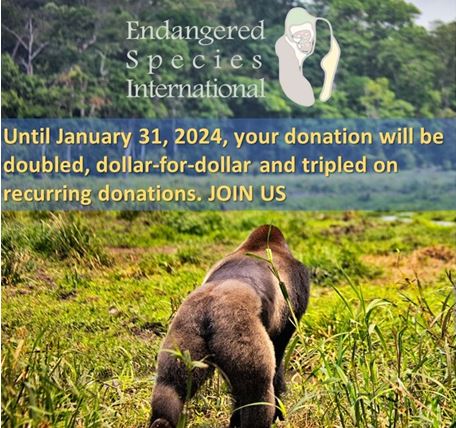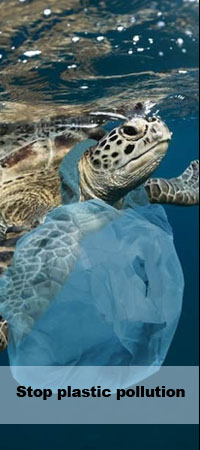|
Q: What are the main goals and program of ESI for 2024 and beyond?
Pierre Fidenci: Our field work will keep focusing on rainforest, ocean (mostly coral reefs), 280 or so endangered species, and plastic reduction entering the ocean. Around 1,200 threatened species benefited from our in-situ and ex-situ conservation actions since 2007. Regarding rainforest and ocean conservation we continue to restore damaged ecosystems by planting native trees, encourage people to live in a way that does not hurt the environment, establish new and effective parks and marine protected areas, and support companies that operate in ways that minimize damage to the environment. Further, we keep strengthening our local and indigenous people involvement in achieving our ambitious conservation goals. Since day 1 of ESI, we have supported indigenous tribes and have worked hand in hand together.
Q: I know that ESI has being working to save amphibians, do you have an update on this issue?
PF: In 2023 a new study shows that more than 40 percent of frogs, salamanders and other amphibian species are at risk of vanishing and their fate continues to deteriorate. The good news is that habitat protection and other conservation measures have helped in the recovery of more than five dozen amphibians from Costa Rica to Malaysia. Our conservation work for amphibians can achieve a lot for endangered frogs and we will intensify their protection and recovery. Rainforest and its rich diversity are essential to many frogs as it provides lower temperature while facing global warning. So protecting and restoring rainforest will also help frogs.
Q: Are there new threats that rainforests are facing this year?
PF: The spread of rubber plantations is driven primarily by our demand for more than 2 billion new tires each year, is creating new pressure to an ecosystem already in deep trouble. The full devastating impact of this has been exposed by a new analysis of high-resolution satellite images that can distinguish rubber plantations from natural forests. Rubber as a crop is a worse deforester than coffee or cocoa and is now closing in on palm oil for the top spot. All tropical areas are affected including in Cambodia, Indonesia, Central and west Africa, and part of the Amazon. All cars being built including electric ones are substantially heavier than previous ones, they reduce the life of a tire by up to 30 percent, and so is raising demand for rubber by the same amount. It is something we must address and tackle rapidly. Our life style must change too.
Q: Is excessive packaging and plastic pollution still a main issue in Asia?
PF: Yes, and in fact it is a growing issue that is spreading in Africa. It is not being tackled properly and seriously. In Indonesia we have observed some progress, but most of countries have done nothing like the Philippines being the 3rd world largest plastic polluters. The spread of online shopping and its plastic package with no regulation has increased the use of plastics enormously deeply affecting wildlife, waterways, ocean, and human health.
Q: What is your experience in saving coral reefs, is there hope?
PF: To date, marine systems have experienced the most extensive impacts of climate change. From coral bleaching to melting sea ice, marine systems are changing on global and regional scales. Ecosystems can recover from all sorts of abuse, and coral reefs are no exception. Coral reefs survived Ice Age Sea an-level changes of 120 meters or more with impunity. They once survived in a world where CO2 from volcanoes was much higher than anything predicted today. But that was over 40 million years ago, and the increase took place over millions of years, not just a few decades, time enough for ocean equilibration to take place and marine life to adapt. So, the current situation is the most extreme for coral reefs as the earth temperature is changing too fast while facing other major stresses like pollution, overfishing, coastal destruction, and sedimentation from deforestation. Now, despite all that, we can still save and restore coral reefs. We can reduce drastically pollution, overfishing and coastal destruction. Our field projects to restore corals have shown that with the proper protection measures, then coral reef can recover and be resilient.
Q: How is the situation of the endangered forest elephant in Africa and what ESI is doing about it?
PF: The African forest elephant is listed as Critically Endangered and it is the least protected of all elephant species due in part of its remote habitat: the rainforest. Its sharp decline and extirpation in many parts of Africa have a mounting consequence on maintaining ecosystem balances within forests. They feed on over 800 species of plants. Their large-scale ranging patterns, and the widespread distribution of their resources, means that forest elephants are particularly vulnerable to habitat fragmentation. Road building to facilitate logging in remote forest areas is as a major threat to the conservation of elephants. We clearly know that forest elephants are threatened from poaching that is most intense close to roads. The probability of elephant presence increased with distance to roads, whereas that of human signs declined. ESI will intensify forest elephant protection this year as we focus on rainforest habitat and other species like lowland gorilla sharing the same habitat. ESI Congo is also working on creating a new large protected area where elephants are present and need urgent protection. We know what we need to do to achieve forest elephant protection and recovery so supporting us is vital.
Q: Can you give us an example why it so important to protect and restore wildlife populations?
I will take the example of the common hippo found in Africa since we are talking about Africa where we work. Despite its name, the common hippo is not common throughout its native range anymore. It has been extirpated from at least four countries, and its populations are small and declining in many more. In some countries where the species was recently abundant, only few hundred individuals are left. Now, why the hippo is so important to protect as a species within its range? With no hippos to maintain the habitat of antelopes, the natural grazing habitat is quickly overtaken by dense thickets of tall grasses, and the antelope population will drop from hundreds of thousands to fewer than few thousands. Hippo declines would have negative effects for other species as well. Hippos are important part of aquatic ecosystems and without them it is the whole current ecosystem that will be gone.
Q: Thank you!

Endangered Species International is a nonprofit, tax-exempt charitable organization under Section 501(c)(3) of the Internal Revenue Code. Donations are tax-deductible as allowed by law.
|











